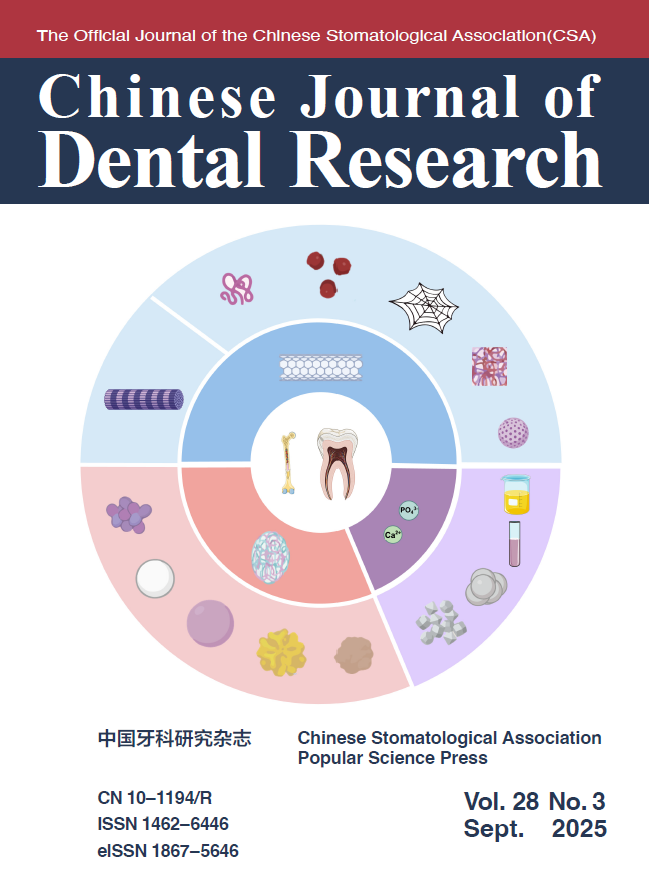Chin J Dent Res 2024;27(1):17–28; doi:10.3290/j.cjdr.b5136791
The Role of DSPP in Dentine Formation and Hereditary Dentine Defects
Writer:Jie JIA, Zhuan BIAN, Yaling SONG Clicked:
Objective: To provide an overview of internal organ involvement (IOI) in immunoglobulin G4-related sialadenitis (IgG4-RS) patients, with a focus on the prevalence and clinical features of IOI, the analysis of serum IgG4 levels in patients with or without IOI, and the usefulness of positron emission tomography (PET) for examination of the whole body. Methods: A systematic search was performed using PubMed, CNKI, Wanfang Data and CQVIP databases. Results: A total of 99 articles, including 493 IgG4-RS cases, were analysed in this study. The male-to-female ratio was 1.57:1 and the mean age was 61.67 years. IOI was observed in 71.6% patients, including lesions of the pancreas (38.5%), the biliary system and liver (17.8%), distant lymphadenopathy (20.3%), the respiratory system (15.6%), the urinary system (12.0%) and retroperitoneal fibrosis (11.4%). The lesions could occur homeochronously or metachronously with IgG4-RS. The serum IgG4 levels in the IOI-positive and IOI-negative groups were 1,131 952 mg/dL and 659 8
|
The dentine sialophosphoprotein (DSPP) gene is the only identified causative gene for dentinogenesis imperfecta type 2 (DGI-II), dentinogenesis imperfecta type 3 (DGI-III) and dentine dysplasia type 2 (DD-II). These three disorders may have similar molecular mechanisms involved in bridging the DSPP mutations and the resulting abnormal dentine mineralisation. The DSPP encoding proteins DSP (dentine sialoprotein) and DPP (dentine phosphoprotein) are positive regulators of dentine formation and perform a function during dentinogenesis. The present review focused on the recent findings and viewpoints regarding the relationship between DSPP and dentinogenesis as well as mineralisation from multiple perspectives, involving studies relating to spatial structure and tissue localisation of DSPP, DSP and DPP, the biochemical characteristics and biological function of these molecules, and the causative role of the proteins in phenotypes of the knockout mouse model and in hereditary dentine defects.
Key words: dentine mineralisation, dentine sialophosphoprotein, hereditary dentine defects, mutation
(editor:CJDR) |




